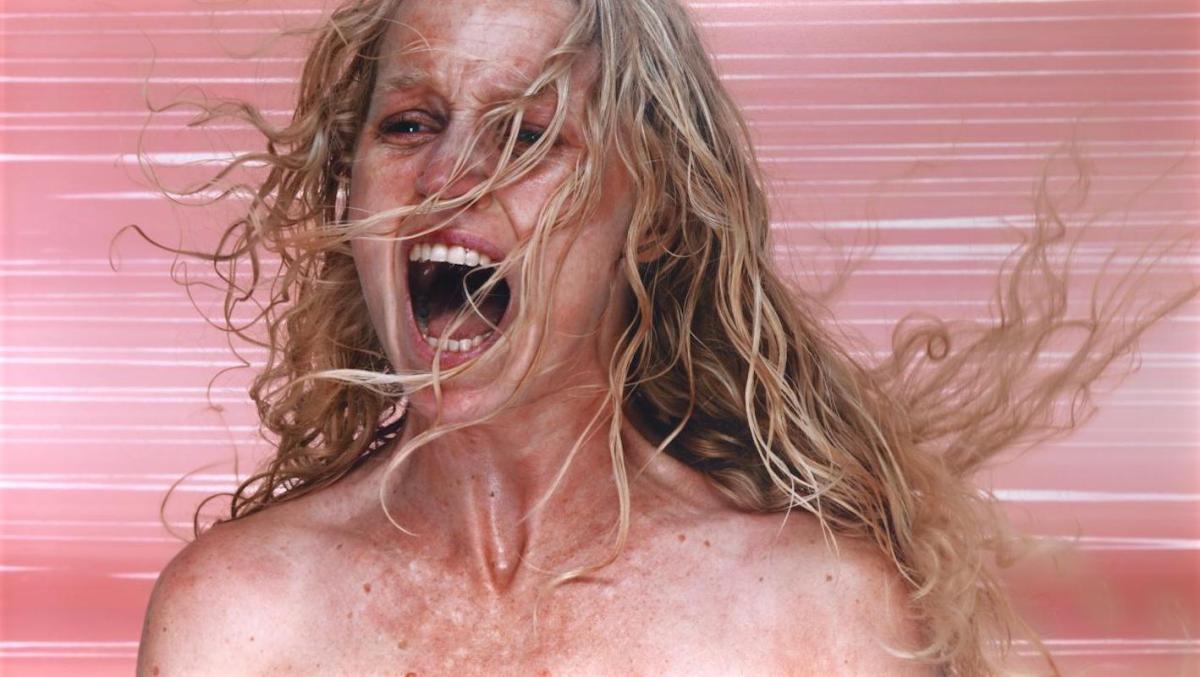Confronting Femininity showcases three Brisbane women artists of different generations who present femininity in extremis: Rosemary Laing (1959–2024), Natalya Hughes (1977–), and Michaela Stark (1994–). The works both confront familiar western conceptions of femininity and make femininity confronting.
Rosemary Laing’s photographic series A Dozen Useless Actions for Grieving Blondes (2009) presents interchangeable beautiful but fraught blondes, recalling Hollywood starlets or fashion models. They are shot in the studio against a startling pink background that offers no context for their grief. Does this ‘Greek chorus’ present a hollow performance or genuine grief? Their excessive display may be funny, but, in framing it as ‘useless’, Laing also speaks to patriarchal disdain for emotional display.
Natalya Hughes is known for critically reworking representations of women by western male modernists Ernst Ludwig Kirchner and Willem De Kooning. However, her new paintings, addressing the Parisian fashion illustrator and costume designer Erté (Romaine de Tirtoff), embrace, endorse, and extend his adventures in hyperfemininity. In her mannerist reworkings, the female bodies have been removed, and the garments collaged, allowing us to focus fetishistically on flirty finery; the architecture of corsets, ribbons, bows, and ruffles; the poetry of pleats, folds, and gathers. These technologies—perhaps designed to keep female sexuality and pleasure under wraps—become exuberant explosions of it. Rather than critique the language of femininity, Hughes doubles down.
Michaela Stark confronts feminine body norms, positioning her own body at the centre of her critique. She creates corsetry and lingerie to bind, morph, and reconfigure her body, presenting fleshy thighs trussed in satin ribbons, asymmetrical breasts popping out of corsets, and bulging stomachs framed by delicate silk bloomers. Her work evokes the BDSM aesthetics of Hans Bellmer and John Kacere, but reappropriates codes of girlish femininity to explore and promote her agency—and the agency of women and femmes—over their bodies. Her early photographic works from Second Skin (2020) mark an early jumping off point for her work. Some were shot on a phone, posing for Instagram posts. Rejecting fashion’s preoccupation with thinness, Stark offers her body as a thing of beauty.
For more information click here





